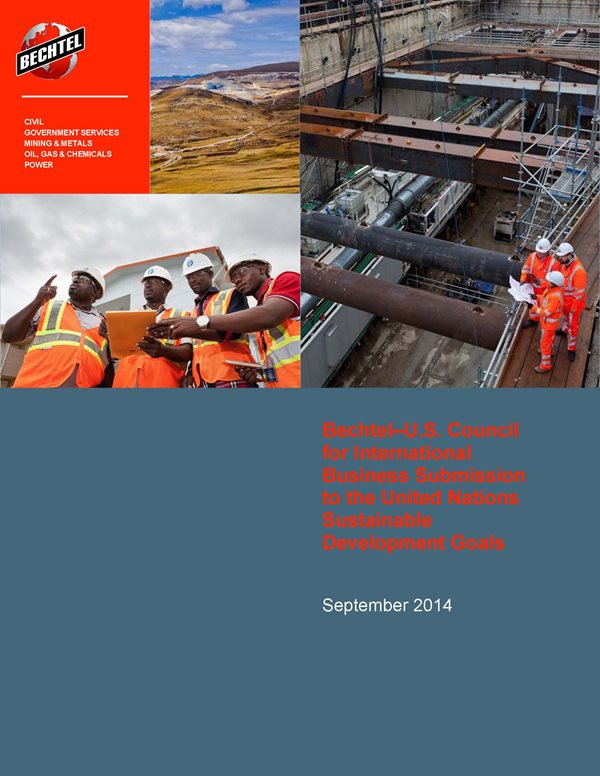There are two underlying premises of the paper. First, infrastructure is not just about physical assets (e.g., roads and bridges), but also about sustainable solutions for the delivery of reliable energy, clean water, communications, logistics and mobility. Second, infrastructure advances the poverty reduction outcomes envisioned in the post 2015 SDGs, and business, including the engineering, procurement and construction (EPC) industry, is an essential partner in this global effort.
In many respects, the growing recognition of infrastructure as a fundamental forcing agent for development is connected to key global trends and their impacts and implications on shared prosperity. With an expected population of almost nine billion by 2030, purposeful, smartly-designed and properly maintained infrastructure will become critical to expanding society’s access to public goods, as well as productive assets and innovations that progress individual and community capacity, wellbeing, and national economic growth. Conversely, failing to address global infrastructure needs will not only weaken economic growth but also potentially reverse some of the positive gains from the 2000 United Nations Millennium Development Goals (MDGs), and compromise future SDG targets.
We offer four recommendations, to help develop infrastructure as one of the critical anchors to achieving the post-2015 SDGs. These recommendations are not exhaustive.
- Promote governance frameworks involving multi-stakeholder inputs from civil society, government and business to strike the right balance between top-down and bottom-up decision-making processes. This approach also helps to organize policies and prioritize projects at a systems level, rather than create single-purpose projects, thereby promoting benefits for multiple sectors.
- Promote strategic infrastructure planning alongside the wider development agenda through technical and contracting frameworks which rank and prioritize investments according to need, return on investment, and affordability. This approach helps governments to prioritize within infrastructure sectors and to assess benefits with costs and budget accordingly.
- Develop a fuller range of alternative financing schemes to address the constraints on public funding and commercial debt. This includes continuing to support multilateral financing institutions and export credit agencies, improving public-private partnerships, promoting project bonds and non-bank lending instruments, and optimizing existing infrastructures for productivity gains.
- Leverage technology and data analytics to improve project quality and greater certainty of outcome. Information technologies and data analytics should not only be used to operate cities more efficiently and sustainably, but also to help advance master planning, conceptual design and engineering, and construction. Designs for climate resilience, for example, can take into account projections for rainfall, tides, temperature and population in order to prepare for changing needs, vulnerabilities and opportunities.
Read the paper


